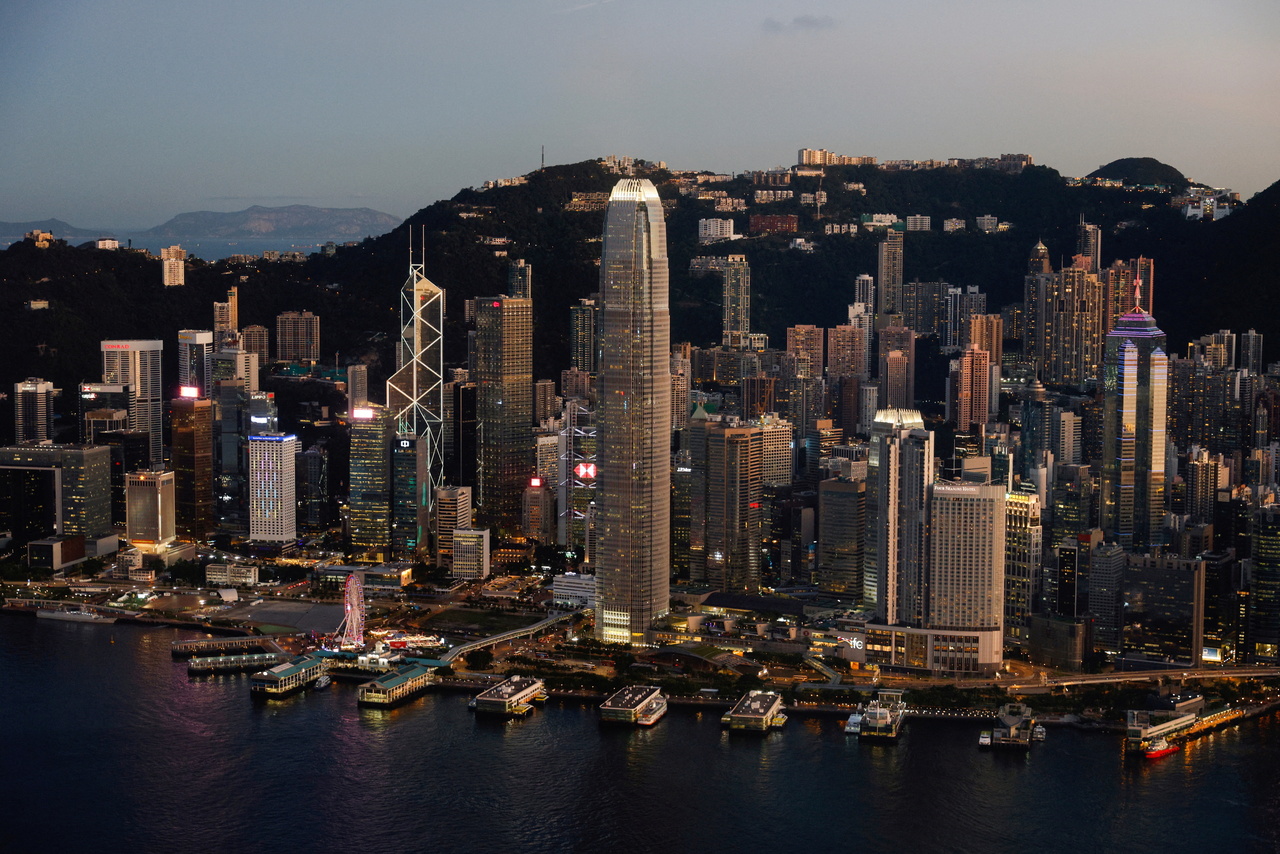Hong Kong defends its dollar for first time since 2019
Sign up now: Get ST's newsletters delivered to your inbox

The Hong Kong Monetary Authority released some HK$1.59 billion (S$282 million) to prop up the currency, which is pegged to the US dollar.
PHOTO: REUTERS
Follow topic:
HONG KONG (BLOOMBERG) - Hong Kong has intervened to defend its currency for the first time since 2019, putting further upward pressure on interest rates in an economy already reeling from strict pandemic border controls and a shaky property market.
Capital outflows fuelled by rising interest rates in the United States sent the Hong Kong dollar to the weak end of its permitted 7.75 to 7.85 per greenback trading range late on Wednesday. The Hong Kong Monetary Authority (HKMA) bought about HK$1.59 billion (S$282 million) to prop up the currency, which was still trading at the weak end at mid-morning on Thursday (May 12).
Further intervention will drain liquidity from the financial system, driving up borrowing costs when the local economy is contracting under the weight of some of the world’s strictest Covid-19 containment measures. Rising interest rates also pose a threat to Hong Kong’s property market, with Goldman Sachs saying earlier this year that home prices may slump 20 per cent by 2025.
“The Hong Kong dollar will hover around 7.85 throughout the second and third quarters, and the HKMA will need to sell more US dollars to defend its currency on the weak end,” said Scotiabank strategist Qi Gao.
The move comes as central banks in places from India to Taiwan act to defend currencies buffeted by expectations of aggressive Federal Reserve rate hikes. While some commentators have called on Hong Kong to abandon its dollar peg, there is little sign that the authorities plan to change a system that has survived multiple speculative attacks since 1983 and helped turn the city into one of the world’s most important financial centres.
In a statement released on Thursday, the HKMA vowed to continue to closely monitor market situations and reiterated its oft-stated view that the city’s linked exchange rate system is functioning well. The Hong Kong dollar continued to operate in an orderly manner and interbank rates will rise, it said.
Selling of the local dollar has intensified in recent months as a hawkish Fed boosts the US currency, while pandemic restrictions in Hong Kong have damped its growth outlook. The testing of the band’s limit on Wednesday came around the same time as faster-than-expected US inflation data sent the greenback briefly up and Treasury yields surging.
While gauges of the US dollar and longer-maturity Treasury yields subsequently retreated, Hong Kong’s currency continues to hover right near the band’s edge.
The Hong Kong dollar has weakened by about 0.7 per cent this year, with some of the declines coming as Fed rate hikes widen the funding rate gap between the US and the special administrative region. That widening gap has led traders to borrow from the interbank market the Hong Kong currency, which they then have been selling for the higher-yielding greenback. The premium of the three-month US interbank rate over the Hong Kong Interbank Offered Rate (Hibor) expanded to the widest since 2019 in April.
The HKMA last intervened in the foreign exchange market in 2020, when the currency hit the strong end of the trading band. That came roughly a year after the authorities intervened on the weak end in early 2019, when shorting the Hong Kong dollar became a hot trade among hedge funds.
The Hong Kong dollar will remain under pressure as US yields climb on rate hike bets, said Mr Samuel Tse, an economist at DBS Bank in Hong Kong.
The Hong Kong dollar’s three-month Hibor climbed three basis points to 0.79 per cent on Thursday, its highest level since June 2020, while the one-month rate was little changed at 0.18 per cent. The three-month tenor jumped to as high as 2.66 per cent in 2019, after the last round of intervention on the weak end of the trading band.

